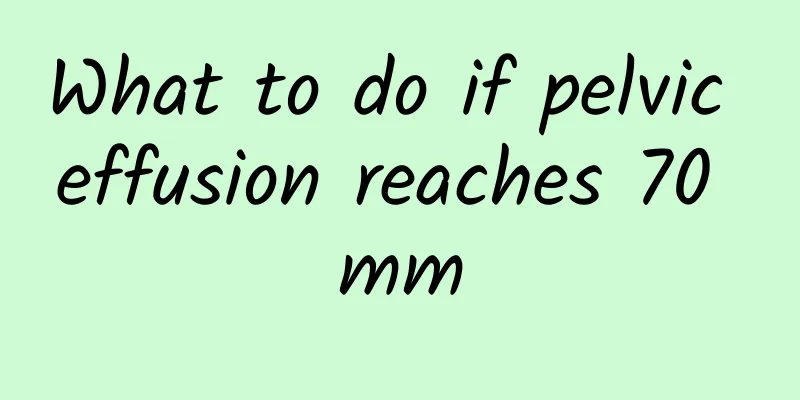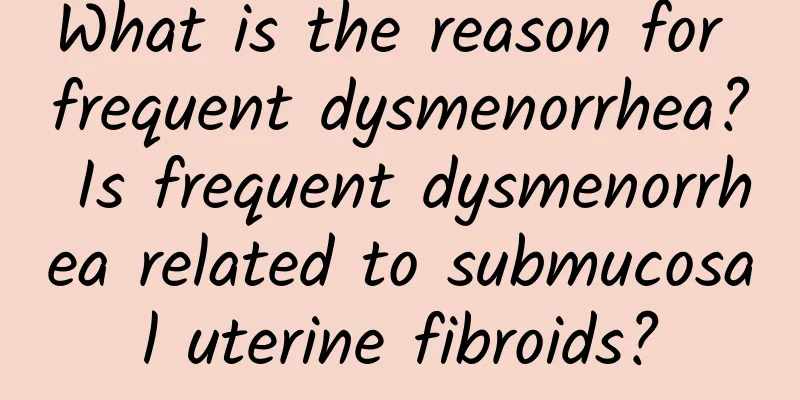What to do if pelvic effusion reaches 70 mm

|
Pelvic effusion is the presence of inflammatory exudate in the pelvis. If the pelvic effusion is less than 10mm, it is physiological pelvic effusion and is considered normal. However, if it exceeds 10mm, it is mostly caused by pathological pelvic effusion and is abnormal, and needs to be treated as soon as possible. So, what should we do if the pelvic effusion reaches 70mm? Pelvic effusion often occurs in the lower part of the pelvic cavity, such as the uterine rectal pouch. B-ultrasound is a commonly used and effective means of examination in gynecology, which can accurately determine the amount of effusion. It can be determined whether it is normal effusion or abnormal effusion by combining medical history, symptoms and physical signs in detail. If it is confirmed to be abnormal effusion, the cause of the effusion must be determined, and removing the cause is the key. Extraction of effusion is a Western medical examination or symptomatic treatment method and should not be performed frequently. Because simply extracting effusion will not only fail to cure pelvic effusion, but will also increase the amount of effusion. Pelvic effusion caused by acute or chronic pelvic inflammatory disease and adnexitis is often accompanied by bilateral or unilateral lower abdominal pain, lumbosacral pain, low back pain, lower abdominal distension and pain, low back pain, etc. In the end, what should we do if the pelvic fluid is 70mm? Here is a summary for you: 1. General treatment of pelvic effusion: relieve patients' mental concerns, enhance their confidence in treatment, increase nutrition, exercise, pay attention to the combination of work and rest, and improve the body's resistance. 2. Physical therapy for pelvic effusion: benign warm stimulation can promote local blood circulation in the pelvis, improve the nutritional status of tissues, and increase metabolism, so as to facilitate the absorption and disappearance of inflammation. Commonly used methods include short wave, ultrashort wave, ion penetration, and various drugs can be added. 3. Surgical treatment of pelvic effusion: Surgery is suitable for lumps such as hydrosalpinx or tubo-ovarian cysts; small infection foci that cause repeated inflammation are also suitable for surgical treatment. The principle of surgery is to effectively cure the disease and avoid the chance of recurrence of residual lesions. Unilateral adnexectomy or hysterectomy plus bilateral adnexectomy should be performed. Ovarian function should be preserved as much as possible for young women. Single therapy for chronic pelvic inflammatory disease is less effective, so comprehensive treatment is appropriate. |
<<: How to prevent recurrence of cervical erosion
>>: What causes vulvar itching?
Recommend
Daily diet for irregular menstruation
In daily life, irregular menstruation can be regu...
Can Bartholinitis be cured in one go?
The effect of surgical treatment of diseases is q...
What is the key to preventing threatened miscarriage?
What is the key to preventing threatened abortion...
How to diagnose endometriosis
The diagnosis of endometriosis requires comprehen...
What are the specific causes of adnexitis?
What are the specific causes of adnexitis? Adnexi...
How much does it cost to treat cervical warts?
In an economic society, rising prices have made c...
Is having two periods a month considered irregular menstruation?
Irregular menstruation is generally defined as a ...
What are the examination items for adnexitis?
Many female friends do not know much about adnexi...
Don’t eat the wrong things to lose weight! Are you eating real vegetables? Or "starchy vegetables"? Nutritionist to crack
If you want to lose weight successfully, you shou...
Experts explain what are the causes of adnexitis
Adnexitis is an inflammation of the reproductive ...
Can severe cervical erosion lead to death?
Will severe cervical erosion lead to death? How s...
What is the best time to have an abortion? What are the four hazards of having an abortion after two months of pregnancy?
Having an abortion after more than two months of ...
What are the symptoms of premature ovarian failure?
What are the symptoms of premature ovarian failur...
Spring weight loss fruit! Eat 6 loquats a day
Loquat is an important fruit in spring. Its yello...
Eat heavy salty food! American children consume 3,300 mg of salt a day
Do you always let your children eat microwaved fo...









